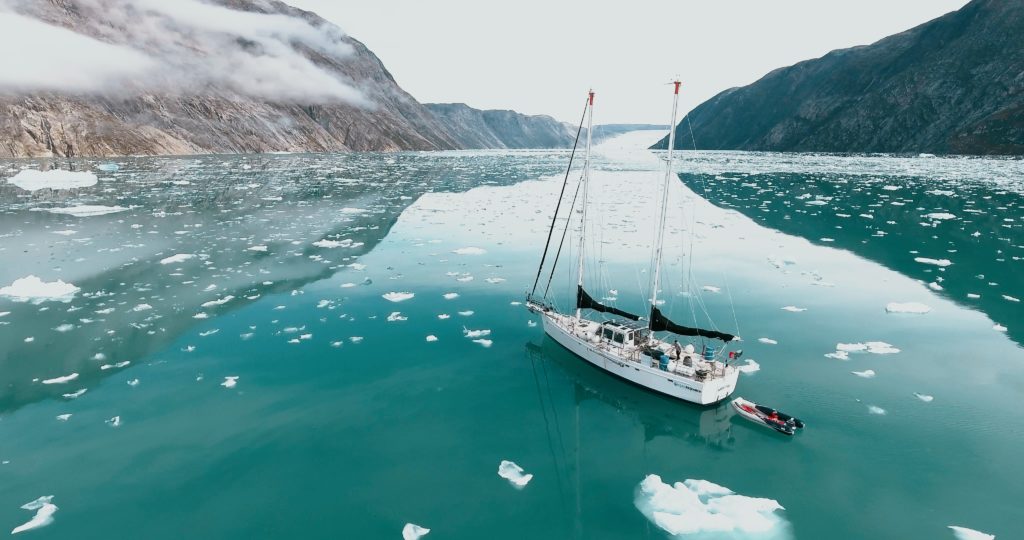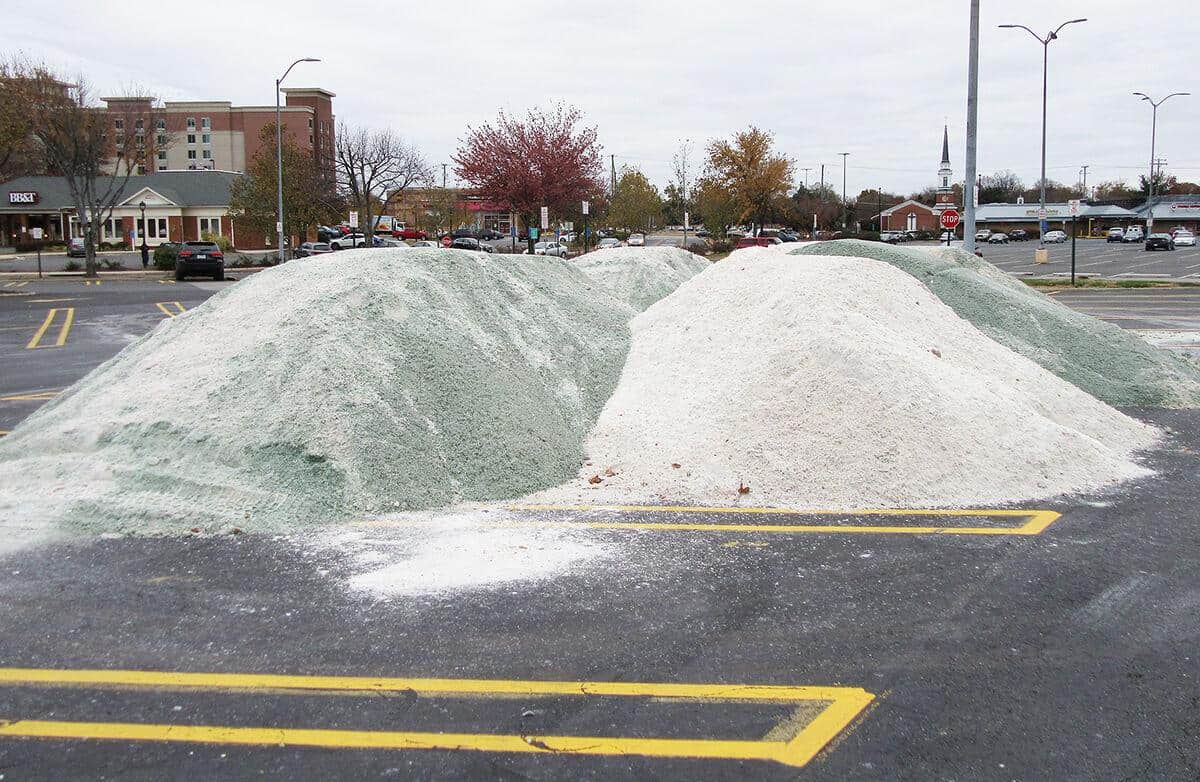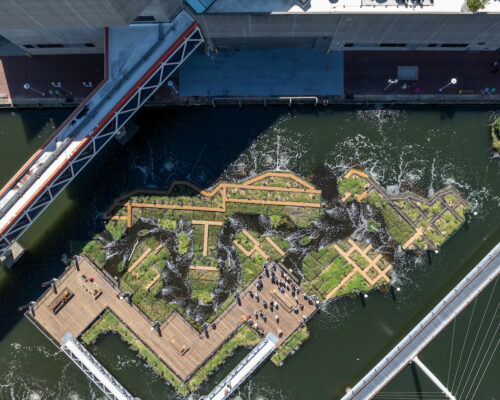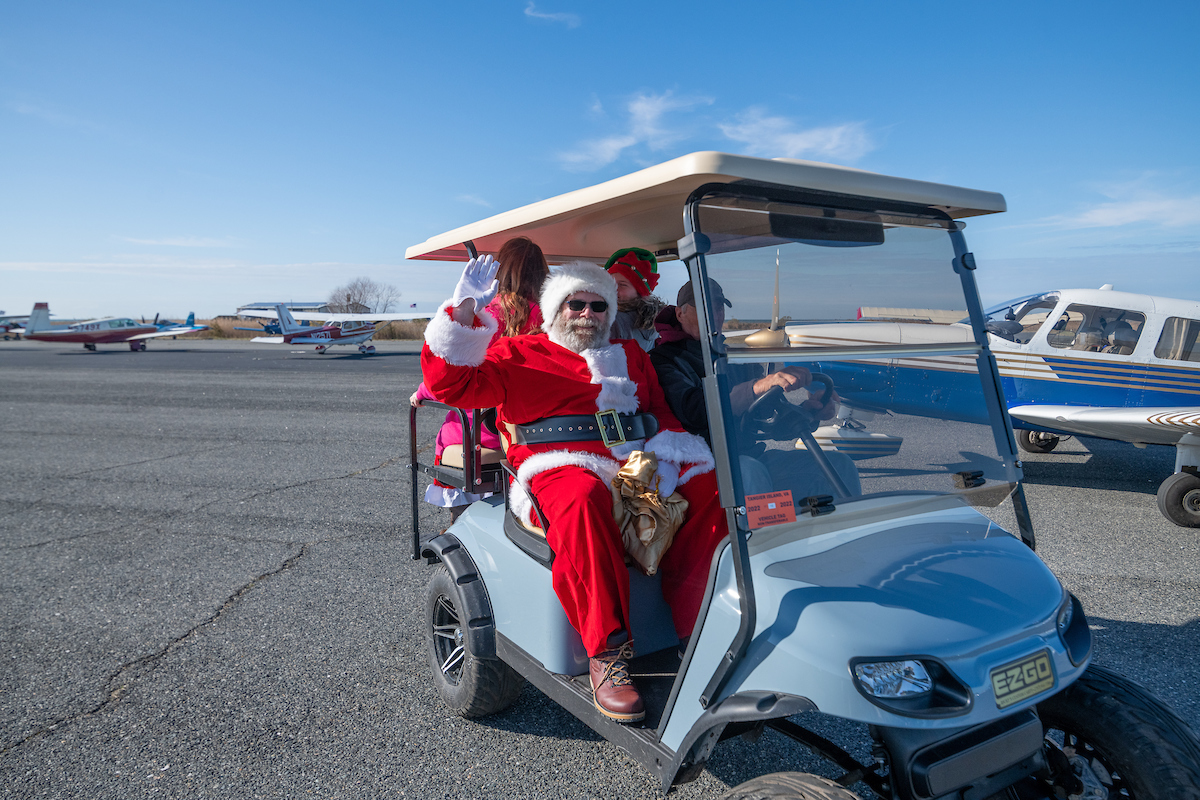“Fortitudine Vincimus” (By Endurance We Conquer)
—Family motto of Sir Ernest Shackleton and Matt Rutherford
Things rarely go smoothly for Matt Rutherford, the Chesapeake’s foremost seagoing adventurer. Where he goes, hardship and tribulation follow, so it was no surprise when obstacles started popping up last summer on his latest foray to the Arctic Ocean. His scientific voyage to Greenland was a shakedown cruise from hell; only persistence saw him through.
Delays in launching left no time for sea trials before leaving Annapolis in the 50-ton, 70-foot steel ketch he’d spent three years reshaping into a research vessel. The goal: three and a half months of climate and geological research with a team of scientists and sailors. It was a raw boat and raw crew, but the Arctic clock was ticking.
When they finally left in June, three weeks late, whatever could go wrong did, from engine failure to gear failure to disease, icebergs, storms, injuries and more. The cascade of problems might have stopped a lesser skipper, but Rutherford has a history.
Locals know him as the ginger-haired 30-year-old from Ohio who set off a decade ago to sail around the Americas in a 40-year-old, 27-foot sailboat. That trip began and ended in Annapolis, 309 days, 27,077 miles from Atlantic to Pacific and back via the Northwest Passage and Cape Horn, nonstop, singlehanded. He lived on freeze-dried food and fresh water made from the sea with a hand-pump.
His mission on returning was to use his newfound prominence to build a nonprofit organization dedicated to marine research. Flying the flag of his newly formed Ocean Research Project, he completed trips in undersized boats across the Atlantic and Pacific, collecting and reporting on plastic pollution.
In 2019, he wrangled the donation of a 20-year-old, unfinished steel hulk that was rusting away in the C&D Canal. Today, thanks to his efforts, the refurbished Marie Tharp, named for a little-known 20th-century pioneer in ocean mapping, is now a fully outfitted research vessel with room for eight in tidy cabins finished in polished cherry. It even has a sauna.
He and his science partner, Nicole Trenholm, won a grant to explore fjords along the Greenland coast for Seabed 2030, an international effort to map all remaining uncharted waters in the world. They also would study glacial melting and its impact on the environment.
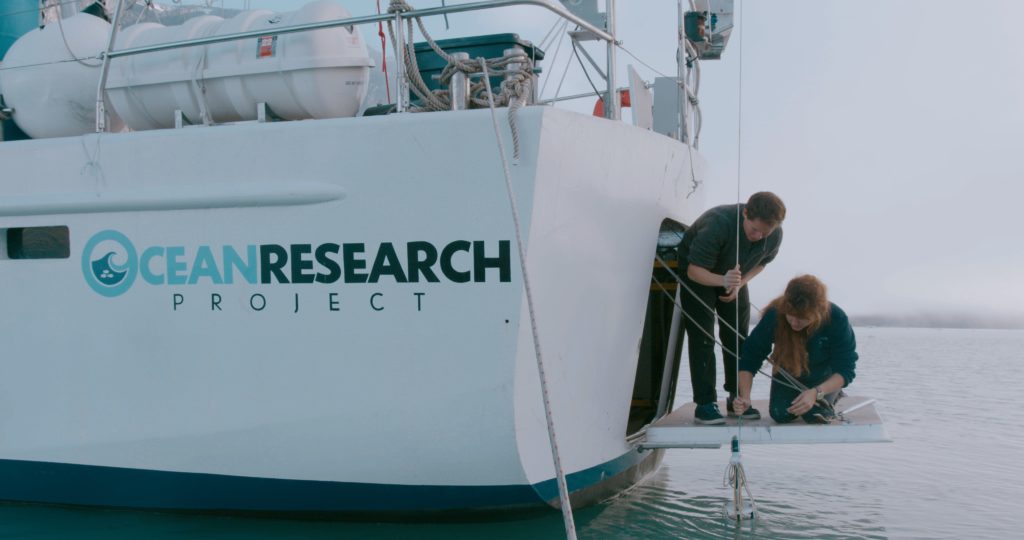
Photo by Phineas Alexander
By the time he launched in late May, Rutherford, now 41, was already behind schedule. Trouble came on the first day of testing in the Chesapeake: under power at anything over 5 knots, the hull shook alarmingly—the drive shaft was out of whack and a haul-out was required.
At the height of spring launch season, no one wanted to pull and block a 50-ton behemoth. It took a week before Rod Jabin at Jabin’s Yard relented. Marie Tharp was then anchored in Annapolis Harbor amid 1,000 boats gathered to watch the Navy Blue Angels air show. “Rod said he’d haul us if we could get there in 20 minutes. It was chaos, winding through the jammed anchorage with limited steering and power. Then the bow-thrusters quit.” Somehow he got in with minutes to spare.
After a week testing bearings, fittings and tolerances in blistering heat, the shimmy was corrected enough to forge up the Bay, through the C&D Canal and down Delaware Bay at 6 to 8 knots. Once in the ocean, in steadier winds, Rutherford reckoned he’d make up time under sail.
And that he did, if only briefly. Blasting along in 25 knots of wind 200 miles off Long Island, “I hear this loud clunk,” Rutherford recalled. He jumped from his bunk, rushed below and found the rudder shaft banging around in its housing, its bearings shot. Many a faulty rudder has sunk a ship. Time for another haul-out, but where?
“We called everyone from Norfolk to Boston. Nobody wanted to do it.” Finally New England Boatworks in Narragansett Bay agreed, and Marie Tharp struck a course for Portsmouth, R.I., and another 10 days on land removing the 300-pound rudder, installing new bearings and addressing engine and generator malfunctions.
Back at sea, surging toward Greenland, Rutherford watched in horror as the sophisticated transducer used to sound the sea floor for mapping died. You can’t map without a transducer and you can’t replace a transducer without hauling. The only place he could find willing was in Lunenburg, Nova Scotia. They arrived in a 30-knot tempest to find two men and a tired, undersized travel lift waiting, “and one guy never took his hands out of his pockets,” Rutherford recalled.
The hoist on the overmatched lift was nerve-wracking, but the fix was made and launch was scheduled next morning. Locals invited the crew to a firepit party. Rutherford was worn out and went to bed. First mate Nick Radtka shook him awake a few hours later to report a crewmember had fallen nine feet off a seawall during the festivities and broken her arm in three places. They got her to a hospital and after another delay were off again, now shorthanded.
That night, bound for Greenland, one of the two remaining deckhands announced he wasn’t feeling well; then Trenholm, the lead scientist, said she wasn’t either. By morning, Rutherford was clammy and sweaty. Radtka took his temperature: 104.
“COVID,” said Rutherford. “I just curled up in my bunk,” where he remained in misery and quarantine for five days. Fortunately, sailing conditions were good. He kept track of progress on his laptop, phoning corrections up to the bridge. By the time they reached Paamiut on Greenland’s east coast, he was back on his feet.
There they collected a crew of scientists and set off on their mission, mapping fjords and dropping probes to measure glacial melting. Things went well until a distracted helmsman smashed into an ice chunk “the size of a Cadillac Escalade,” according to Rutherford. The bergy bit rolled under the hull and twisted the propeller into a pretzel.
That dropped top speed to a shaky 3–4 knots, which is how they mapped and measured until arriving in Nuuk three weeks later, where they could haul on a marine railway. The locals there hammered the prop back into crude but usable shape and the cruise resumed.
Through it all, Rutherford stayed calm, as a captain must. Radtka, the first mate, was a mixed martial arts cage-fighter in his younger days, then trained other cage fighters. “I have known a lot of really tough people,” he said, “but I never met anyone as mentally tough as Matt. There were times I was surprised he didn’t just jump off the boat.”
Despite the late start and setbacks, research was finished just two weeks later than scheduled. The weary travelers set off for home in October, mission accomplished. Celebrations were cut short when halfway to Newfoundland, Hurricane Fiona spun up, heading much farther north than most hurricanes go—straight at the Marie Tharp.
Rutherford found a hurricane hole on the northwest tip of Newfoundland, rafted up to some moored shrimp boats and waited out the blow. Then, skirting the edge of Hurricane Ian, he made it back to Annapolis by boat show time, where he kept busy giving talks and lining up sponsors for next year’s expected return for more Arctic research.
After a decade and more of shorthanded, underfunded sea voyages, Rutherford says his key to preparation is “blind optimism,” and the key to success is “determination and perseverance.” Somehow, like his hero Shackleton, who kept his crew alive for months in the Antarctic after their ship was crushed by ice a century ago, he manages to keep his head when all around him is falling to ruin.
Follow Matt Rutherford’s adventures on www.oceanresearchproject.org; or listen to his entertaining podcast, “Singlehanded Sailor.”
Angus Phillips was outdoor editor of The Washington Post for 35 years, covering the fishing, hunting and boating scene both locally and globally. He’s lived in Annapolis since 1983.

